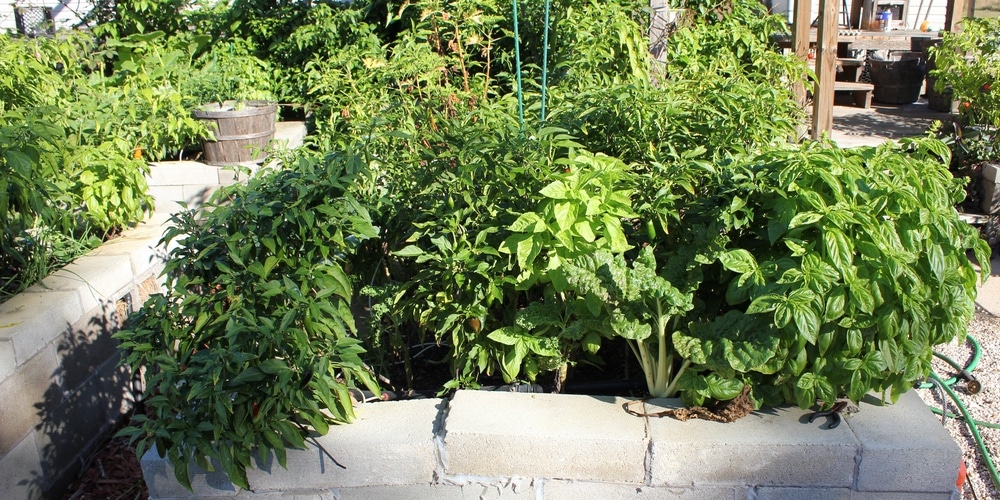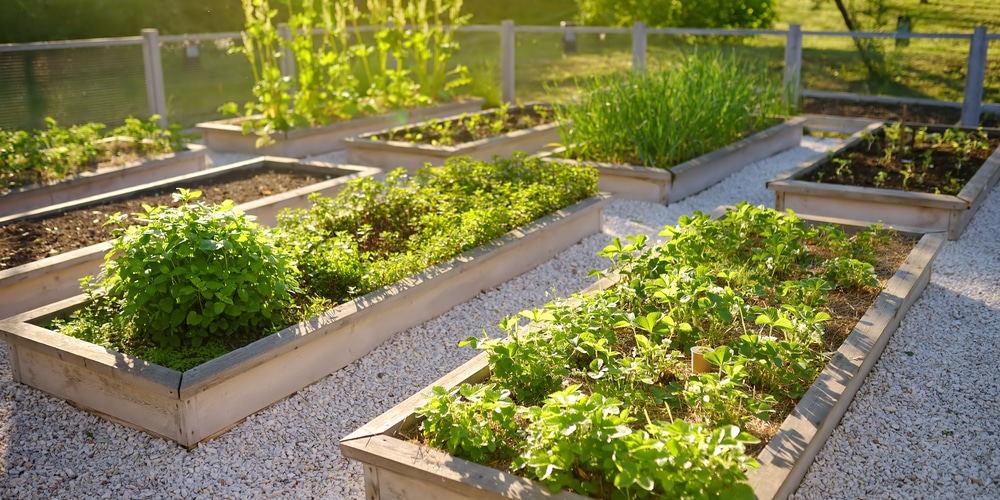If you’re planning to grow vegetables for your family or want to create a kitchen herb garden, you may like to build or invest in some raised beds. Cultivating vegetables is becoming increasingly popular and is an excellent option if you’re into healthy eating and want to ensure your vegetables are free from toxins or self-sustaining. When planning your garden, cinder block vs wood raised bed(s) is a popular topic.
Two of the most common materials for building raised beds are cinder blocks and wood. Raised beds are easy to work with and can be beneficial if your ground soil isn’t as healthy as it should be. They are also popular as they help keep critters such as rabbits and gophers away from your plants. Let’s look at two of the best building materials for raised beds: cinder block vs. wood raised beds.
Cinder Block Raised Beds
The material that you choose to use when constructing a raised bed will depend on various factors. Before making a decision, you’ll need to consider how high you want your raised bed to be and what you plan to grow. It’s also wise to consider the climate and the benefits and disadvantages of the two materials.
What are Cinder Block Raised Beds?
Cinder block raised beds are made using concrete blocks. Concrete has many benefits over wood as it’s long-lasting and won’t ever decay or rot. Cinder block raised beds are becoming a very popular choice as they are durable and will last for years. They’re also a cheap way to block the neighbors view.
The Benefits of Cinder Block Raised Beds
1. Cheap and easy to construct
The main advantage of using cinder blocks to build a raised bed is that they are very cheap and easy to get your hands on. You’ll likely be able to find cinder blocks locally. Building cinder block raised beds is more affordable than wooden beds. As cinder blocks are easy to obtain and very cheap, they are the perfect choice for beginners.
2. Durable
Cinder blocks are made from concrete which is a solid material. Once your cinder block raised beds are installed, they will last for years to come without requiring any maintenance.
However, you’ll need to buy good-quality blocks if you want them to last. Often cheaper cinder blocks are prone to becoming chipped and can also leak. Cinder blocks are also a good choice if you live in an area with windstorms or even tornadoes, as they are strong and won’t be damaged by the wind.
3. Customizable Height
Cinder blocks come in different sizes and can also be stacked. If you’re looking to create a higher raised bed, you can stack small blocks together. Most raised beds are at least 12 inches tall, but if you’re using cinder blocks, you can build them up to three feet. You can also use the bricks to create a pattern, which will give you an attractive-looking raised bed. Try experimenting with different shapes and sizes of blocks.
Cinder blocks give you more flexibility when building your raised beds; you can even create an L-shaped raised corner bed.
The Disadvantages of Cinder Block Raised Beds
1. Heavy to Lift
Cinder blocks are cumbersome and generally weigh between twenty and forty pounds. Building with these blocks is physical as they can be heavy. You’ll need to carry the blocks and place them in the correct position, which can be hard work. You may like to hire someone to build your raised beds, but this will add to the final cost.
2. Less Heat Dissipation
One of the main disadvantages of using cinder blocks is that they will trap heat in the soil. During the summer, the heat may damage your plant’s roots, and depending on the plant varieties you’re growing and the climate you live in, your plants may not be able to cope with the heat.
3. pH Drop
Cinder blocks can also change the pH of the soil as some types leach lime into the soil. This causes the earth to become more acidic and lowers its pH. However, not all cinder blocks cause this issue, and it can be prevented by regularly checking soil pH values.
Wood Raised Beds
Wooden-raised beds can be built using various types of wood. It’s best to line wooden raised beds and treat them so that the wood doesn’t rot quickly. Wooden-raised beds are popular as they are easy for people with basic DIY skills to make. They also look great but can become rotten reasonably quickly if the wood isn’t treated.
The Benefits of Wood Raised Beds
1. Better Aesthetics
Many homeowners like the look of wood-raised beds; they are generally more attractive than cinderblock beds. However, it does come down to personal preferences as to which you find more aesthetically pleasing.
2. Great for DIY Enthusiasts
Wood is an excellent material for people who have experience in DIY and working with wood. You can customize your project to meet your needs and make the raised beds, shapes, and sizes you need.
3. Easy to Install
Wooden raised beds are easy to install as the wood isn’t as heavy as cinderblocks. However, you will need some tools for installation.
The Disadvantages of Wood Raised Beds
1. Expensive
Wooden-raised beds are likely to be more expensive than the cinder block variety. The cost of your raised beds will depend on which type of wood you use and whether you pay a professional to install them. The best type of wood for raised beds is cedar, but this is an expensive material.
2. Untreated Wood will Easily Rot
Wood isn’t as hard-wearing or long-lasting as cinder blocks, and you may find that your wood rots quickly. Moisture can seep into the wood, causing it to become rotten if the wood isn’t treated. Raised beds made from untreated woods are only likely to last three years.
If you choose cedar or redwood, your raised beds may last longer as these two types of wood are naturally resistant to moisture as well as insects. In addition, a good non-toxic bed liner can help negate bugs from other types of wood.
3. Treated Wood may Contaminate the Soil
The obvious solution to protect against rot is to treat the wood. However, it would help if you were careful about the products you use, as treated wood can cause arsenic to leak into the soil. This chemical isn’t healthy for plants and isn’t good if you’re growing vegetables to consume.
Conclusion: Wood Raised Bed vs Cinder Block
No matter what you choose in the battle of the beds, cinder block vs wood raised bed, both are both excellent materials for making raised beds. It often comes down to personal preferences and budget as to which one you choose. Cinder blocks are durable and long-lasting, whereas wood looks more attractive, and many people find working with wood easier than concrete.

